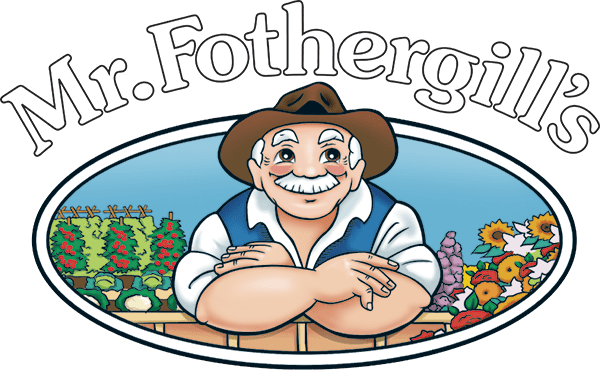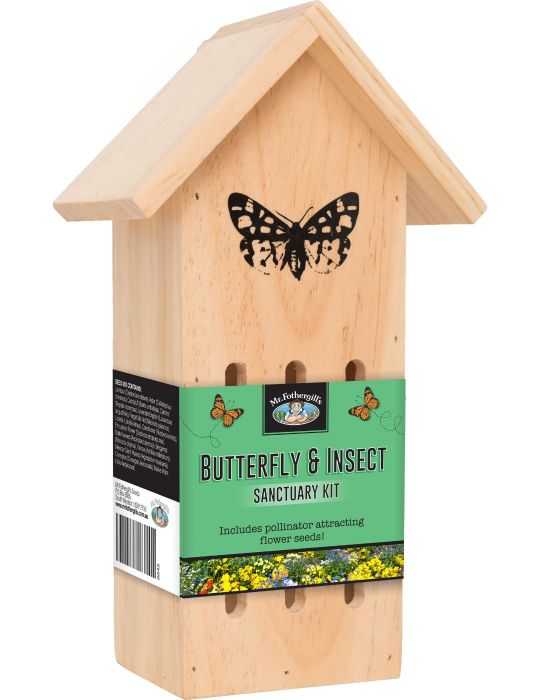Bee Sanctuary Kit
With the world’s bee, insect and butterfly population in serious decline, Mr Fothergill’s is focused on producing products that will help increase the bee population and keep them pollinating our crops far into the future.
As pollinators, bees, butterflies and insects play an essential role in our gardens. They transfer pollen from one flower to another, fertilising plants so they start forming fruits and seeds. 70 of the top 100 most popular food crops are pollinated by bees, and they pollinate 80% of all flowering plants on Earth!
Unfortunately, bees, butterflies and other beneficial insects are under increasing threat due to pesticides, parasites and climate change – but we can help them by using responsible gardening practices, planting flowers to attract them and providing them with shelter.
Our Bee Sanctuary contains a wooden bee house and a sachet of pollinator friendly flower seeds to help attract bees and beneficial insects to your garden. The seed mix is made up of the following varieties and covers approximately 2m2:
- Achillea (Achillea millefolium)
- Agrostemma (Agrostemma githago)
- Alyssum (Lobularia maritima)
- Butterfly Bush (Oenothera lindheimeri)
- Calendula (Calendula officinalis)
- Californian Poppy (Eschscholzia californica)
- Canterbury Bells (Campanula medium)
- Cornflower (Centaurea cyanus)
- Chrysanthemum (Chrysantheum carinatum)
- Collinsia (Collinsia grandiflora)
- Coreopsis (Coreopsis grandiflora)
- Chinese Forget-Me-Not (Cynoglossum amabile)
- Dianthus (Dianthus caryophyllus)
- Digitalis (Digitalis purpurea)
- Echium Dwarf (Echium plantagineum)
- Gilia (Gilia leptantha)
- Godetia (Clarkia amoena)
- Gypsophila (Gypsophila elegans)
- Hesperis (Hesperis matronalis)
- Iberis (Iberis umbellata)
- Kochia (Bassia scoparia)
- Limnanthes (Limnanthes douglasii)
- Linaria (Linaria maroccana)
- Linum (Linum grandiflorum)
- Lupin Russell (Lupinus polyphyllus)
- Lupinus (Lupinus hartwegii)
- Matthiola (Matthiola bicornis)
- Nasturtium (Tropaeolum majus)
- Nemophila (Nemophila insignis)
- Nigella (Nigella damascena)
- Poppy (Papaver rhoeas)
- Phacelia (Phacelia tanacetifolia)
- Reseda (Reseda odorata)
- Snapdragon (Antirrhinum majus)
- Viscaria (Viscaria occulata)
- Wallflower (Erysimum cheiri)
This bee house is suited to native solitary bees, a number of which are stingless. It is not a honey hive.
Size: 300mm (diameter)
This bee sanctuary is coated in a non toxic paint for protection making it weatherproof and safe for bees and insects. It is also made of FSC timber, meaning it is responsibly sourced and eco-friendly.
| How To Grow | To use, simply hook a piece of wire into the back loop of the bee sanctuary and attach to a tree trunk or branch or simply place amongst the garden. Sowing your seeds: 1. Prepare the chosen area for your seeds by turning or raking the soil until you have a good crumbly consistency, removing any stones and weeds as you go. |
|---|---|
| When to Sow/Plant | Spring, Summer, Autumn, Winter |
Our Seed Guarantee
If you are not completely satisfied with these seeds Mr. Fothergill's will gladly replace them for free. Performance subject to growing conditions.
6963


